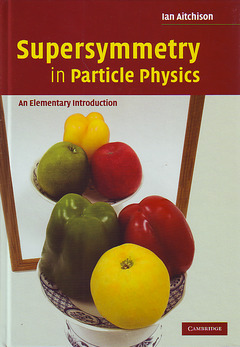Description
Supersymmetry in Particle Physics
An Elementary Introduction
Author: Aitchison Ian
The textbook, first published in 2007, provides a simple, practical introduction to supersymmetry for graduates and researchers.
Language: English
Subject for Supersymmetry in Particle Physics:
Approximative price 71.13 €
Subject to availability at the publisher.
Add to cart
Publication date: 09-2007
238 p. · 17.6x25.4 cm · Hardback
238 p. · 17.6x25.4 cm · Hardback
Description
/li>Contents
/li>Biography
/li>
Supersymmetry represents the culmination of the search for fundamental symmetries that has dominated particle physics for 50 years. Traditionally, the constituents of matter (fermions) were regarded as different from the particles (bosons) transmitting the forces between them. In supersymmetry, fermions and bosons are unified. Intended for graduate students in particle physics, and researchers in experimental and phenomenological supersymmetry, this textbook, first published in 2007, provides a simple introduction to a previously formidably technical field. Its elementary, practical treatment brings readers to the frontier of contemporary research, in particular the experiments at the Large Hadron Collider. Theories are constructed through an intuitive 'trial and error' approach. Basic elements of spinor formalism and superfields are introduced, allowing readers to access more advanced treatments. Emphasis is placed on physical understanding, and on detailed derivations of important steps. Many short exercises are included, making for a valuable and accessible self-study tool.
1. Introduction and motivation; 2. Spinors: Weyl, Dirac and Majorana; 3. A simple supersymmetric Lagrangian, and a first glance at the MSSM; 4. The supersymmetry algebra and supermultiplets; 5. The Wess-Zumino model; 6. Superfields; 7. Vector (or gauge) supermultiplets; 8. The MSSM; 9. SUSY breaking; 10. The Higgs sector and electroweak symmetry breaking in the MSSM; 11. Sparticle masses in the MSSM; 12. Some simple tree-level calculations in the MSSM; References; Index.
Ian Aitchison is Emeritus Professor of Physics at the University of Oxford. His research interests include time dependent effective theories of superconductors, field theories at finite temperature, and toplogical aspects of gauge theories.
© 2024 LAVOISIER S.A.S.




